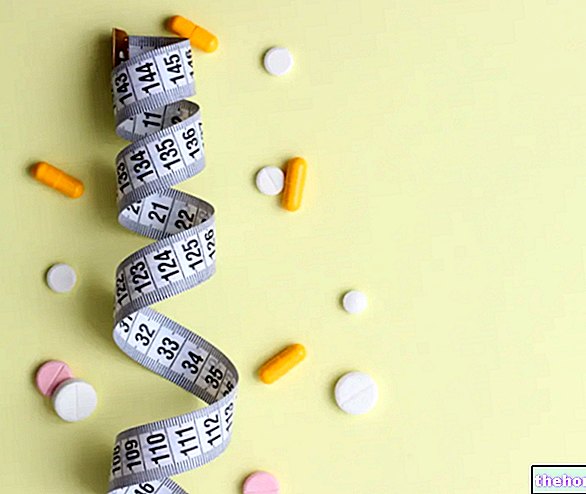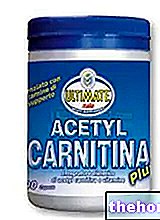
About Createne - Anderson
Createne - Anderson
Food supplement based on creatine monohydrate in powder
FORMAT
Pack of 125/250 grams
COMPOSITION
Fine powder micronized creatine monohydrate (CREAPURE)
PER PORTION: Creatine 3 gr
Product Features Createne - Anderson
N.B: Creatine monohydrate CREAPURE: Creatine obtained through a patented production process (cyanamide cycle), which respects good manufacturing standards, guaranteeing the consumer certified and guaranteed levels of purity and quality. In technical terms it takes the form of a product in which the levels of potentially toxic metabolites (creatinine, dicianidiamide, dihydrotriacin and thiourea) are within the limits imposed by law.
The creatine present in this product is associated with a water molecule, and represents the simplest and most studied form on the market. The chemical nature of this product negatively affects the solubility in aqueous environment, to which intestinal problems are often correlated. Micronization, that is the breakdown of creatine monohydrate into very fine particles, partially reduces this unpleasant effect, improving solubility and reducing the annoying formation of precipitates.

This molecule has become one of the most studied and characterized ergogenic aids for athletes of various disciplines, and is finding new therapeutic applications in neurodegenerative diseases such as Alzheimer's and Parkinson's. The biochemical action is due to the ability to rephosphorylate ADP in ATP (adenosine triphosphate) during intense physical exercise, supporting the muscle and also the brain in their activities, so much so that the depletion of creatine phosphate that inevitably occurs during performance (approximately 1 minute later), is accompanied by a reduction energy availability and contractile effectiveness.
The increase in muscular energy potential therefore inevitably passes through the saturation of the muscular levels of phosphocreatine, which can be achieved through an appropriate diet or through supplementary protocols. The amount of creatine taken orally is absorbed in the intestine by means of a sodium-dependent cotransport or by passive diffusion (decidedly reduced), and put into circulation. In fact, it is estimated that 5 grams of oral creatine can bring the levels of cratininemia to 100mg / L after just one "hour, while with the addition of carbohydrates up to 170mg / L. From the bloodstream, through specific transporters exposed on the surface of muscle fibers, and through an insulin-enhanced concentration gradient transport mechanism, creatine can enter the skeletal muscle fiber and be stored predominantly in the form of phosphocreatine, then subsequently used. during strenuous exercise.
Rationale for integrating Createne - Anderson into sports practice
Despite more than 200 studies and at least 20 years of experimentation, the scientific world is still debating the various potentials of creatine and its benefits in sports. Fortunately, by examining everything from a statistical point of view, it is possible to describe a series of effects accepted almost unanimously by various experts, which justify the great success of creatine among all the most effective ergogenic supplements.
- Increased power and maximum strength between 5 and 15%;
- Increase in contractile capacity;
- Single sprint improvement;
- Improvement of muscle work during intermittent exercise:
are the benefits immediately verifiable and scientifically accepted.
To the purely energetic effects are added others, indirect, less linear and still much discussed, which foresee profound changes in the molecular structure of the muscle:
- Hypertrophy: several studies show a significant increase in lean mass (up to 2 kg) following supplementation with creatine and intense exercise. However, we are still far from identifying a molecular explanation, with some studies showing an increase in transcription factors for the myosin heavy chain, and others that show a greater expression of anabolic factors such as IGF1 or a "hypertrophy induced by the enhancement of muscle contractile capacities.
- Myoprotective action: some studies show how creatine, taken for prolonged times, can reduce the blood levels of some markers of muscle damage, such as creatine kinase and lactate dehydrogenase.
- Anti-fatigue action: there is no lack of scientific evidence showing a significant increase in the fatigue threshold;
- Aerobic capacity: even if little justified from a theoretical point of view, there are some studies in the literature that show an improvement in ventilatory capacity and the aerobic threshold, although in most cases, it is not accompanied by a significant improvement in performance.

Method of use recommended by the company - Createne - Anderson
Dissolve in half a glass of water. It is recommended to take one serving a day with a meal. One serving corresponds to two scoops (about 3 grams of creatine).
Method of use in sports Createne - Anderson
Creatine supplementation can follow different protocols, all quite effective given the presence of results recorded by the scientific literature.
Some protocols provide for a "load" phase, with about 20 gr / day of creatine for 5/6 days, followed by a maintenance phase at 2/3 gr / day for a month.
This type of protocol can guarantee in a few days an increase of about 20% of the muscle reserves of preservable phosphocreatine during the entire maintenance period.
Others, on the other hand, prefer to achieve the same effect over a longer period of time, avoiding the loading phase, and guaranteeing a daily intake of about 3 grams for 28 days.
The loading phase should be carried out by dividing the daily dose into approximately 4 portions, in order to avoid a significant reduction in creatine muscle uptake (receptor down regulation action) and subsequent renal elimination.
In any case, it would be preferable to take creatine during meals, or for example in pre-workout, with a source of carbohydrates or mixed (proteins and carbohydrates) in order to enhance muscle transport.
The supplementary cycles should be suspended at the fourth week, and spaced one from the other for about 6 weeks, in order to restore optimal endogenous synthesis.
Synergies Createne - Anderson

Furthermore, some evidence shows an increase in the levels of the glucose transporter GLUT 4, on the muscle tissue following the intake of creatine, with an increase in the glycogen resynthesis capacity; this action could be used in the post-workout anabolic window.
Carbohydrates + creatine + proteins: guarantees an increase in absorption comparable to that present for simple carbohydrates only. In this case, however, there would be a potential advantage both on the nutritional intake of the snack and a reduction in the potentially dangerous glycemic peak.
CLA + creatine + proteins: at doses of 6 g, 9 g and 36 g respectively taken for 5 weeks, it has been shown to be effective in improving strength and increasing muscle mass by 3 - 4% in combination with strength training.
Arginine + Creatine: appears to provide a better ergogenic boost with an increase in maximum peak strength.
Createne Side Effects - Anderson
Various studies agree that creatine supplementation in healthy individuals is safe. In particular, studies relating to chronic (3-5 gr / day for a year) and acute (20 gr / day for a week) supplementation do not show any effects. particular collateral.
However, it should be remembered that the ingestion of too high or poorly solubilized doses could be accompanied by abdominal cramps, nausea, vomiting and diarrhea, as well as chronic administration, especially if carried out in conjunction with high-protein diets could significantly increase the renal load.
Finally, even if it does not represent a real side effect, it must be considered that the increase in weight resulting from the accumulation of water inside the cell could have a negative impact on performance.
Precautions for use Createne - Anderson
The product is contraindicated in cases of renal or hepatic pathology, cardiovascular disease and / or hypertension, during pregnancy, during lactation and under the age of 12 and adolescents not yet formed.
In case of prolonged use (over 6/8 weeks) the doctor's opinion is necessary.
This article, elaborated on the critical rereading of scientific articles, university texts and common practice, is for information purposes only and therefore has no medical prescription value. It is therefore always required to consult your doctor, nutritionist or pharmacist before undertaking the use of any supplement.. Learn more about Createne's critical analysis - Anderson.










.jpg)


















